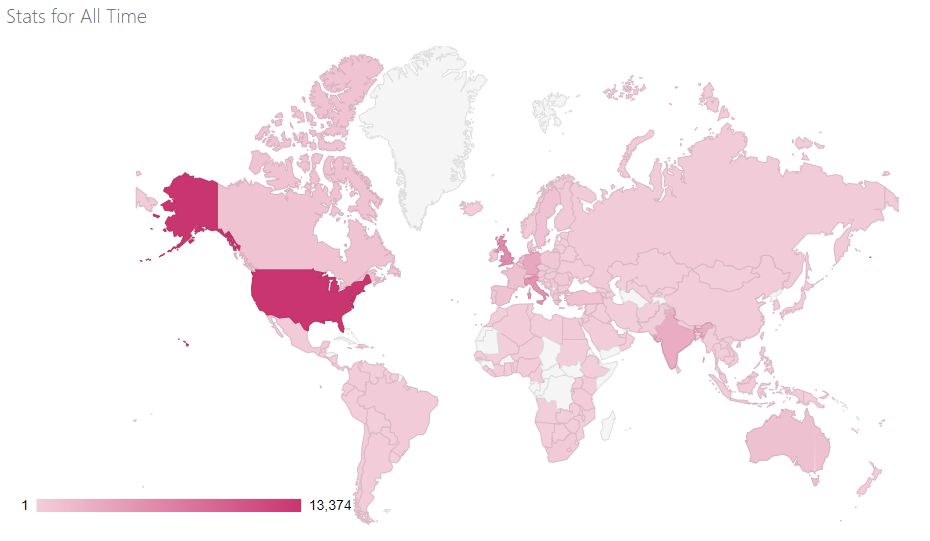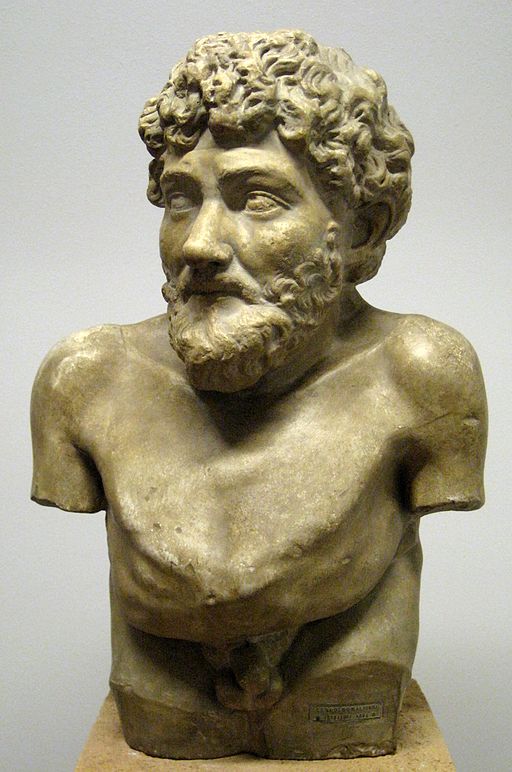YA blog outlook: 2014-2020 & beyond
Read time: 5 minutes
This post gives an overview of the growinimages/easyblog_imagesg activity on the blog since its launch in 2014. Based on the results of a short survey, the post also provides an outlook for 2020 and beyond. The post emphasises the collective and creative value of the AESOP YA blog. By coming full circle with the historical birth of the AESOP community, the post concludes with a suggestion to rekindle imagination and kindness in spatial planning.
Overview
The blog of the AESOP Young Academics network was born under the luminary auspices of Simone Tulumello and the enthusiastic support of the YA Coordination Team. In a 'Farewell' post Simone Tulumello shared the history of the blog and the circumstances that made its creation and growth possible over the years. More than five years into its existence, the blog of the AESOP Young Academics continues to provide rich and diverse insight into all aspects of spatial planning theory and practice. Topics have included, among others:
- territorial governance
- climate change & resilience
- strategic planning
- transport & mobility
- mapping
- economic planning & finance
- housing & regeneration
- social sustainability & well-being
- environmental planning
- public participation in spatial planning
- smart cities
- the world of academic research & publication
Since 2014, the blog has featured no less than 182 posts, generated over 54,000 views and attracted more than 36,000 visitors. 2018 was the year with the most activity.
The following map analytics provides evidence of the truly global readership of the AESOP YA blog. It is a continuation of the inspiring trend of international readership observed by Simone Tulumello in November 2017.

Countries with the most views include:
- USA: 13.3K views
- UK: 5.7K views
- Italy: 5.1K views
- Germany: 3.3K views
- India: 3K views
- Netherlands: 1.6K views
- Hong Kong: 1.1K views
- France: 1.1K views
- Australia: 1.1K views
- Turkey: 1.1K views
- Spain: 1K views
2500 of the blog's followers tread the social media referral route, and over 100 readers follow the blog via their own Wordpress account. This is a clear sign that activity on the blog needs to tap into the connecting power of social networks. Every link in the chain matters - so do continue to share blog content within your own networks!
Your blog: Your community
Beyond website analytics, the value of the blog lies in the breadth and diversity of its many forms of contributions. The blog's growth is of course the result of much hard work from its past and current editors, regular contributors, and guest authors. The map also shows that everyone connected to the YA blog plays an essential role in generating and growing interest in it. The value of the blog is truly collective: the synergy of all its members and followers sustain its global outreach. This remains possible only thanks to you: by sharing content with colleagues and friends, inviting them to read and contribute, sharing your work in various blog formats, suggesting ideas for further development, and helping to grow the various resources hosted on the website.
As we enter a brand new decade, let us pay the dues to the many contributors of the AESOP YA blog over the past five years, and continue to celebrate its content!
2014-2019
Since the blog's inception in 2014, there has been a steady growth in activity and international interest in the blog, covering a dazzling range of themes and topics.
Check out the yearly highlights for contributions on the blog: 2014, 2015, 2016. 2017, 2018, and 2019.
Check out also the recap of the YA network's activities in 2019 by Agnes Matoga, one of the most productive years in its history.
2020 & beyond
A quick survey was shared with AESOP members and followers in January 2020. There were 26 responses, mostly from early career (PhD & post-docs: 12 responses) and more experienced academics (lecturers & professors: 10 responses).
In terms of content, survey participants mentioned the following types of contributions (per number of mentions):
- List of conferences in spatial planning (16)
- Career tips from senior academics (16)
- Viewpoints & personal reflections (16)
- Book reviews (15)
- Summaries of academic research articles (14)
- Transferable skills: collaboration, grant applications, etc. (14)
- Summaries of conferences & events (12)
- Career tips from senior planners (11)
- Teaching skills (11)
- Career tips from firms & organisations (6)
Among many others, the most popular themes of interest were:
- Planning theory (19)
- Urban design (12)
- Strategic planning (12)
- Climate change & resilience (11)
- Public participation & public engagement (10)
- Regeneration & Housing (10)
- Territorial governance & policy (9)
- Inclusion & equity (9)
- Economic planing & finance (8)
- Politics & advocacy (8)
- Transport & mobility (7)
- Architecture (7)
- Landscape & Environment (7)
- Art & cultural planning (7)
Eight survey participants also made suggestions for improvements. These point to a potential for greater accessibility, diversity and more effective outreach:
- improving the website's design and attractiveness
- soliciting more contributions from non-EU members in the community,
- engaging more widely on social media (e.g. Instagram?)
- using the blog as a place of debate and to voice critical and divergent perspectives
- more calls to participate and know the (AESOP and YA) network better
- the possibility of a better YA newsletter (@YA Coordination Team!)
Overall, the modest sample of survey responses (26 survey participants) indicates the AESOP YA community leans strongly on the academic side of the spatial planning discipline. Both theory and practical fields of research are of particular interest, however, including participatory forms of planning. This aptly reinforces the salience of contributions that aim to bridge theory and practice, among other types of content.
Long live AESOP! Long live Aesop!
As we are blessed to enter the 2020s with both significant opportunities and very serious challenges, do continue to share your work with the YA blog by drawing inspiration from the survey responses presented above.
As evidenced in this post, the value of the AESOP YA blog is truly collective. It can support your own career as well as contribute to leverage more desirable planning approaches for the benefit of many. Our only limit as a community may be our collective imagination and capacity.
Indeed, ancient Greek poet Aesop, whose name stands as the acronym for our very own network, made a bold link between collective success and kindness, by allegedly writing:
The level of our success is limited only by our imagination and no act of kindness, however small, is ever wasted.

The moral and epistemological values of the AESOP / YA community at large, as encapsulated in its very name, remain perhaps under-articulated. This is notwithstanding the exciting historical development of the AESOP network since 1987. The choice of Aesop as 'patron' saint, so to speak, was intentional. As AESOP co-founder Klaus R. Kunzmann, emeritus professor at TU Dortmund, wrote in 2012:
[Aesop's name] is linked to ambitions of planners, to plan for people, to communicate with people, and to use narratives and story telling in planning and decision-making processes, not just plans and maps.
This reiterates an important question for this new decade: Where is Aesop in AESOP? Here is a renewed opportunity to share your experience and reflections about the moral, epistemological, and perhaps even spiritual values that guide your own work and interest in spatial planning. Let us not shy away from acknowledging, praising and reappraising the values we bring to our world. These values operate within us, through us, and beyond us. What we do both enacts and reinforces them, whether or not we can actually see them! This is arguably part and parcel of a reflexive/reflective approach to spatial planning (e.g. see the landmark book The Reflective Practitioner by Donald Schon). Reflection in action. Action in reflection. If we do both (simultaneously, or sequentially), we can perhaps be more successful. One step back, two steps forward!
To conclude, in 2020 and beyond, let us continue to enact AESOP's and Aesop's dual legacies and cultivate success by tapping into two of the greatest, timeless virtues humanity has known: imagination and kindness. Far from benign, these are to be taken very seriously, because they can have profound, transformational effects at both personal and collective levels, through both reflection and action.
When you subscribe to the blog, we will send you an e-mail when there are new updates on the site so you wouldn't miss them.


Comments 2
[…] find out more about the YA blog here, including its creation of the blog in 2014, as well as yearly overviews of the activity. The list is growing, and open to innovation and new exciting projects led by the […]
[…] blog in 2014-2020 – a period of steady growth in all […]